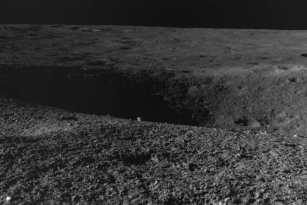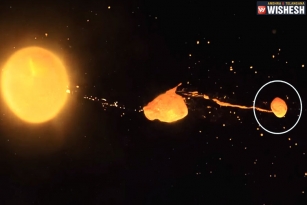
A fanged reptile that lived about 265 million years ago - before the age of the dinosaurs - has been dug up in southern Brazil by scientists.
The skull of the predator was dug up from a farm in the pampas plains of Rio Grande do Sul, after scientists spotted a bare patch on Google maps and flew over to investigate.
The leopard-sized predator lived about 40 million years before the dinosaurs - and belonged to a family of reptiles that died out, leaving no descendants.
Named Pampaphoneus biccai, it was a dinocephalian - a member of the family of anteosaurs that looked like dinosaurs but died out before the dinosaurs arrived.
It would have been cold-blooded, using its powerful jaws to rip chunks off prey while still alive.
The pampas are the flatlands of south America, - and 'phoneus' is Greek for 'killer'.
Although Pampaphoneus biccai was found in modern-day Brazil, it came from a time when all the continents were fused together into one land mass called Pangaea.
The family of creatures previously known to exist only in Russia, Kazakhstan, China and South Africa, but the latest discovery, described in Proceedings of the National Academy of Sciences suggests the creature was more widespread.
"This fossil is a member of the carnivorous Anteosaurs and provides evidence for Pangea-wide distribution of carnivorous dinocephalians," the Daily Mail quoted Palaeontologist Dr Juan Carlos Cisneros, of the Federal University of Piaui in Teresina, Brazil, as saying.
Ohter dinocephalians included the South African Anteosaurus magnificus and the Russian Titanophoneus potens which were the largest - more than 18ft long - terrestrial predators of the age known geologically as the Permian.
The researchers believe a barrier free connection would have allowed the beasts' migration from Laurasia and Gondwana - the northernmost parts of Pangea - to the southern tip of the continent.

























